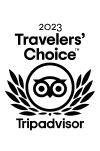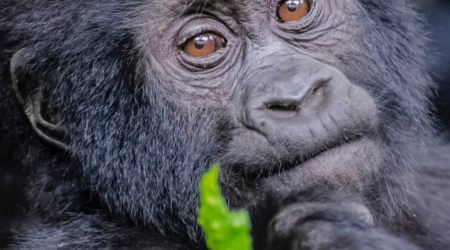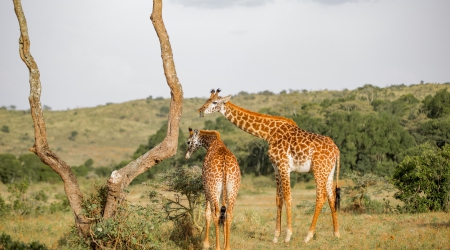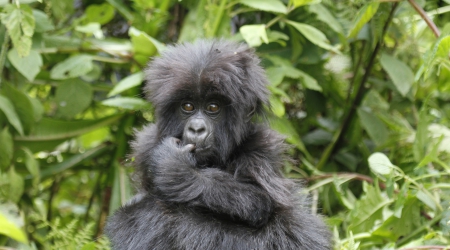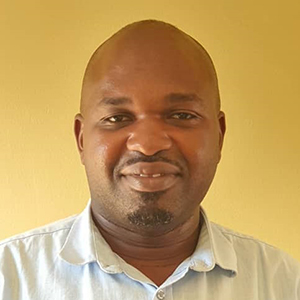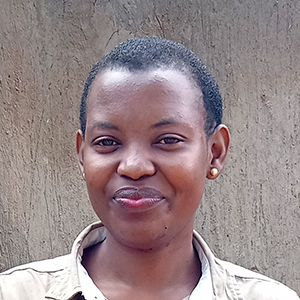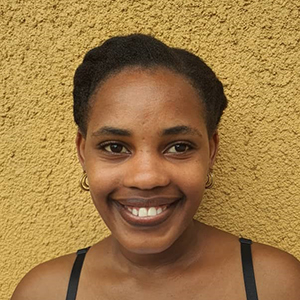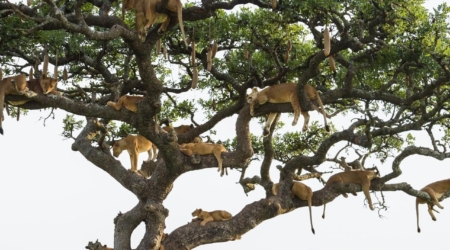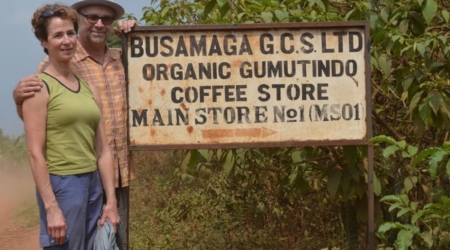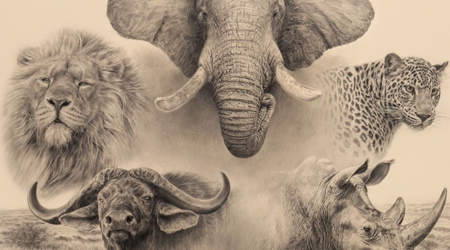By 1983, rhinoceroses had become extinct in Uganda due to unchecked poaching and prolonged civil unrest. Both the black rhino and the northern white rhino disappeared from all protected areas, leaving the country without any wild rhino population for over two decades.
In 2005, the Uganda Wildlife Authority and Rhino Fund Uganda initiated a formal reintroduction programme. The programme was to use southern white rhinos sourced from Kenya and Disney’s Animal Kingdom in the United States.
The government, under the auspices of UWA, introduced these individuals into a privately managed conservation area, the Ziwa Rhino and Wildlife Ranch in Nakasongola. This marked Uganda’s first steps toward rhino recovery. By 2025, the sanctuary had successfully bred and protected a population of 48 white rhinos. These efforts positioned Uganda for the wider reintroduction of these animals into national parks.
On 22 September 2025, Uganda launched its first-ever Rhino Naming Ceremony as part of a broader conservation campaign. The ceremony is titled “Name and Save a Rhino.” with an aim of raising 40 billion Ugx (approximately USD 11 million). These funds will support rhino management, veterinary care, anti-poaching infrastructure, and eventual relocation into Uganda’s protected areas.
Background – Rhino Conservation in Uganda
Extinction in the Wild (1970s to 1983)
By the early 1970s, Uganda’s rhino populations had sharply declined. Rampant poaching, driven by illegal trade in horns, and institutional collapse during political upheaval severely weakened wildlife protection systems.
Both the black rhino and the northern white rhino became extinct in various protected areas, including Murchison Falls and Kidepo Valley National Parks.
The last known wild rhino in Uganda was reportedly sighted in 1982. By 1983, both rhino species were officially classified as extinct in the country. This marked a critical loss in Uganda’s megafaunal diversity and severely impacted the ecological integrity of savannah parks.
Launch of Reintroduction Efforts (2005)
In 2005, Uganda Wildlife Authority (UWA), in partnership with Rhino Fund Uganda (RFU), launched a reintroduction programme. Initially, the programme started with six southern white rhinos. These rhinos were imported from Solio Ranch in Kenya and Disney’s Animal Kingdom in Florida.
They settled at Ziwa Rhino and Wildlife Ranch, a privately managed sanctuary in Nakasongola District.
![]()
Ziwa Rhino Sanctuary became the ideal location because of its enclosed management model, accessibility from Kampala, and favourable security profile. The sanctuary operates under co-management between UWA, RFU, and Ziwa Rhino and Wildlife Ranch Ltd, integrating tourism, anti-poaching efforts, and breeding within a 70-square-kilometre fenced area.
Population Recovery and Breeding Success (2008 to 2025)
Ziwa recorded its first rhino birth in 2009. Since then, the sanctuary has seen consistent breeding success, supported by veterinary monitoring, specialised feeding regimes, and active patrol units. As of September 2025, the population consists of 48 rhinos, all of which were born within the sanctuary.
This success has positioned Uganda as the only East African country with a functioning in-country rhino breeding programme. Ziwa now serves as a model for ex-situ conservation within a high-risk poaching region.
Future Reintroductions into National Parks
Uganda Wildlife Authority has announced plans to reintroduce rhinos into Uganda’s savannah parks by 2027, starting with Murchison Falls National Park. The team has completed a feasibility assessment, and habitat security protocols are currently under review.
The “Name a Rhino” campaign plays a foundational role in preparing for this relocation phase. Funds will be set aside for constructing bomas, expanding anti-poaching infrastructure, and supporting a relocation management unit within UWA.
As someone closely following Uganda’s conservation strategies, this historical overview is essential to understanding the purpose and urgency behind the naming campaign.
The Naming Ceremony – Purpose, Structure, and Stakeholders
The “Name a Rhino” initiative, launched by the Uganda Wildlife Authority (UWA) in September 2025, aims to raise over UGX 4 billion (approximately USD 1.1 million) to support the reintroduction of southern white rhinos into national parks. This reintroduction marks a return after a four-decade absence from the wild.
The funds will support four critical conservation activities: constructing release enclosures (bomas), strengthening anti-poaching measures, enhancing community outreach, and improving veterinary logistics. Each rhino selected for naming plays a symbolic role in public conservation messaging. The campaign also elevates public awareness of Uganda’s long-term vision to restore native megafauna.
Structural Framework and Ceremony Format
The campaign is a public-private partnership coordinated by UWA in collaboration with Rhino Fund Uganda, private conservation financiers, and tourism operators. Names are auctioned through corporate sponsorship or donor pledges.
Each naming includes a certificate, stakeholder acknowledgment, and the allocation of funds to a specific rhino support category.
The official naming ceremony, scheduled for October 24, 2025, will take place at Ziwa Rhino and Wildlife Ranch in Nakasongola District. UWA has designated the event as part of Uganda’s wider conservation diplomacy and wildlife investment strategy.
The format includes live presentations, guided sanctuary tours, rhino profile briefings, and a ceremonial naming segment led by UWA’s Executive Director.
A parallel media campaign, managed by the Ministry of Tourism and the Uganda Tourism Board (UTB), will broadcast the event across regional platforms. Participating entities may co-brand their rhino’s profile within allowable ethical boundaries as per UWA’s sponsorship guidelines.
READ ALSO: Women in Conservation in Uganda
Core Stakeholders Involved
Uganda Wildlife Authority remains the lead implementing body and custodian of the campaign. Rhino Fund Uganda provides animal management support and veterinary oversight at Ziwa Sanctuary.
Ziwa Rhino and Wildlife Ranch Ltd ensures on-site logistics, including guest hosting, biosecurity, and animal access coordination.
Donor institutions, such as the European Union Delegation to Uganda and the World Bank-funded UG-LIFE project, provide support through technical advisory services and financial matching mechanisms.
Media partnerships include NTV Uganda, UBC, and Africa Tourism TV, with plans for live event coverage.
Moreover, the private sector, including domestic tour operators and regional hospitality investors, has been encouraged to sponsor rhino names, establishing symbolic alignment with conservation commitments.
If you are tracking policy trends in East African conservation, this campaign reflects a broader shift towards participatory wildlife funding and narrative-based community engagement.
Community Engagement and Education Initiatives
One of the core objectives of the “Name a Rhino” campaign is to reshape the public’s understanding of Uganda’s rhino conservation story. Educational segments have been integrated into local radio broadcasts across Nakasongola, Luweero, Masindi, and Kiryandongo Districts.
These programs focus on the ecological role of rhinos, the threats posed by poaching, and the long-term national goal of restoring them to their native ecosystems.
UWA, in coordination with the Ministry of Education and Sports, has initiated mobile learning caravans that visit primary and secondary schools near Ziwa Rhino Sanctuary. These caravans distribute conservation comic books, animal ID cards, and rhino trivia games.
Teachers are offered briefing kits and workshops on integrating rhino protection topics into social studies and biology classes.
School Involvement and Youth Participation
Over 60 schools have participated in the rhino drawing competition launched in August 2025. Winners from each district will attend the naming ceremony and receive eco-literacy awards from UWA.
Beyond the symbolic value, these efforts help foster emotional attachment to Uganda’s wildlife heritage from an early age.
Moreover, students from Makerere University’s Department of Wildlife and Animal Resource Management are volunteering as interpretation guides for international guests during the naming ceremony. This exposure offers them field-level conservation communication experience.

If you are considering how large-scale conservation campaigns achieve grassroots legitimacy, this youth-led knowledge strategy offers an instructive example.
Local Leadership and Cultural Messaging
Traditional leaders from Buganda and Bunyoro have been consulted on naming norms and territorial alignments, especially in choosing rhino names that reflect historical clans or riverine ecological themes.
Through these consultations, UWA aims to restore not only the species but also its cultural associations, many of which disappeared during the rhino extinction period in the early 1980s.
Additionally, community conservation dialogues are in place through LC1 committees and subcounty offices. These discussions address the risks and responsibilities associated with living near reintroduction zones. Topics include land-use planning, early reporting of rhino movements, and protocols for preventing human-wildlife conflict.
Private Sector and Corporate Sponsorship Models
The “Name a Rhino” campaign is officially hosted by the Uganda Wildlife Authority under the Ministry of Tourism, Wildlife & Antiquities. UWA’s campaign portal offers “Sponsoring a rhino name (with branding and media visibility)” as a giving option.
The campaign’s fundraising target is approximately USD 11 million (UGX 40 billion) over five years. The official call invites individuals, companies, philanthropists, and global conservation supporters to participate.
In August 2025, Uganda Tourism Board announced the Rhino Naming Campaign ahead of the naming ceremony, confirming the naming of 17 calves at Ziwa.
Donor Events and Visible Support
UWA held a Sponsor’s Dinner at the residence of the British High Commissioner in Kampala. The High Commissioner participated, and the dinner served as a high-level engagement event for campaign backers. The dinner attracted dignitaries and conservation stakeholders, reinforcing partnership relationships.
Media outlets and campaign partners also list institutional backers, such as the British High Commission, UNDP, Centenary Bank, the Uganda Tour Operators Association, and the Jane Goodall Institute – Uganda, among their supporters.
Sponsor Tiers and Benefits
UWA’s campaign site outlines two giving categories: Naming Sponsor and Institutional Supporter, offering branding and visibility benefits. Donors who sponsor naming receive media visibility and recognition within the campaign’s communications framework.
According to the Ministry announcement, proceeds from the naming campaign will fund habitat expansion, veterinary care, anti-poaching systems, and community conservation programmes. Campaign documents also indicate that translocation efforts—moving rhinos from Ziwa to Ajai Wildlife Reserve, Murchison Falls, and Kidepo Valley—are part of the long-term plan.
Conclusion
The Name a Rhino campaign marks a notable shift in Uganda’s conservation approach, merging public engagement with structured financial participation. By opening naming rights to citizens, institutions, and corporate sponsors under strict guidelines, the Uganda Wildlife Authority has introduced a conservation financing mechanism grounded in national symbolism and community inclusion.
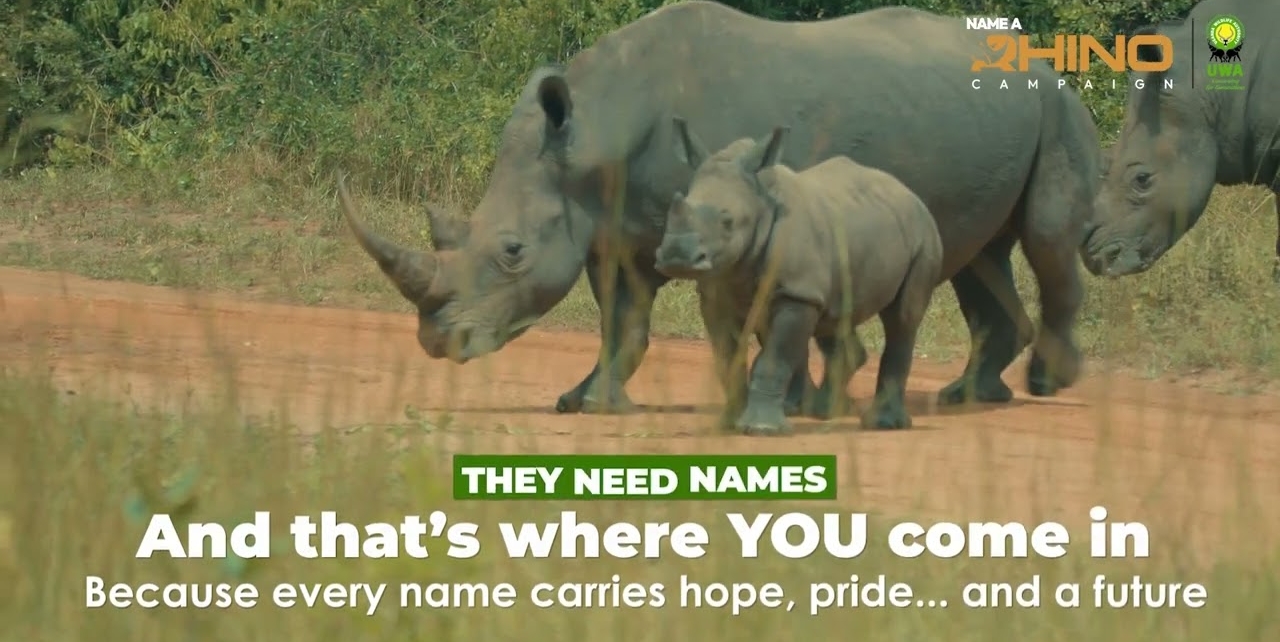
What emerges is not a ceremonial gesture, but a coordinated framework for resourcing rhino protection efforts. The funds raised directly support veterinary care, sanctuary infrastructure, ranger operations, and educational outreach, particularly in areas surrounding Ziwa Rhino Sanctuary.
The campaign repositions Uganda as a leader in linking wildlife identity to public responsibility. Through carefully regulated naming criteria, the initiative safeguards against the commercial dilution of conservation messaging while capitalizing on widespread interest in ecological impact.
If managed with the transparency and institutional discipline signalled in its early phases, the Name a Rhino campaign could become a case study in African conservation strategy. It balances symbolism with resource mobilisation, individual pride with ecological stewardship, and public participation with regulatory clarity.
For conservation tourism stakeholders, the precedent set by Uganda’s campaign warrants close observation, not simply for its novelty, but for its structural potential in long-term species recovery and public conservation literacy.

